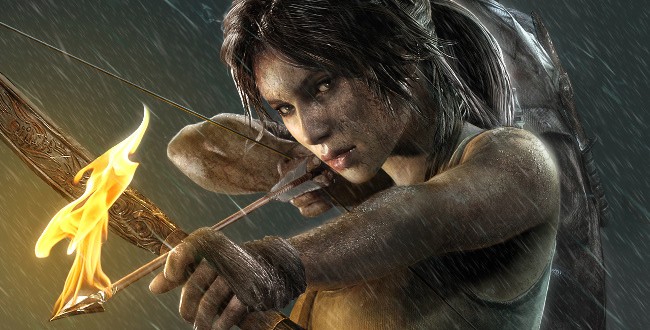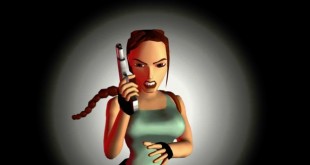Playable female characters in games are currently a novelty. The vast majority of games cast players as a male protagonist, and it doesn’t surprise anyone. However, when a game allows players to play as a woman, it is delightfully surprising – and that’s what’s wrong with it. We shouldn’t be surprised by the presence of playable female characters – we should be surprised by their absence. A study featured on the Washington Post website in August 2014 found that women make up 48 percent of the gaming population, while the remaining 52 percent are male. Adult women also outnumber boys under eighteen in the gaming community. The presence of women in the community is steadily increasing – in 2010, women made up just 40 percent of the gaming population.
Mojang recently announced that Minecraft will be getting a free update that will introduce the character Alex, a female equivalent to Steve. In the post that announced the update, Mojang said, “jolly old Steve doesn’t really represent the diversity of our playerbase.” This is completely accurate, as is shown by the statistics cited above. Mojang knows their audience, and they’re smart enough to realize that a sizable part of their playerbase is made up of female gamers who might not want to play as a man. From a business and customer service perspective, Mojang made a smart move that will undoubtedly attract more players to the game while exciting current players at the same time.
The announcement of Alex sparked headlines like “Minecraft Finally Added a Female Default Character” and “You can finally choose to play as a girl in Minecraft.” The key word that keeps popping up is “finally.” This is something that the community wants. The praise that Mojang has received for adding a female character is an indication that the inclusion of women in video games is a huge step in the right direction.
The Call of Duty series is usually seen as a very stereotypically masculine franchise. As a woman, people are surprised when I tell them that I’ve played nearly every game in the series. “I like to play online matches to blow off steam,” I say, but people are still a bit surprised. Treyarch, however, understands this. I am far from the only woman who plays Call of Duty from time to time. However, there has never been a playable female character in a Call of Duty campaign – until now.
Female soldiers were first announced for Call of Duty: Black Ops III in the game’s announcement trailer. A recent preview by GameSpot’s Chris Watters stated that Black Ops III “is the first CoD game that allows the player to choose the gender of the campaign protagonist, and while there is separate voice acting for both male and female characters, the script is roughly the same.” While 2013’s Call of Duty: Ghosts was the first CoD game to bring playable female characters into the game, this was only available in the multiplayer section of the game. Black Ops III allows players to experience the campaign through a woman’s eyes, and that is an extremely exciting feature.
Game developers have obviously been working on integrating women into their games, and both Mojang and Treyarch deserve the credit that they’re getting. However, the problem here is that a playable female character is news – it’s abnormal. The final reveal in Metroid is still seen as one of the most important and shocking moments in gaming, because it never crossed anybody’s mind that Samus was anything but male. Since then, we’ve seen mostly male protagonists. There are quite a few exceptions that have done especially well. Many RPGs (The Elder Scrolls, Fallout, Dragon Age, Mass Effect, World of Warcraft, Neverwinter, etc.) have allowed female players to play through deep and exciting stories as characters that they can personally identify with. Having the choice between a male character and a female character also provides more role-playing opportunities for players of any gender identity. Games like The Last of Us, Borderlands, Resident Evil, and Alien: Isolation have shown gamers that female characters can be strong and fierce, just like male characters. The recent Tomb Raider re-boot transformed Lara Croft from a pixelated sex symbol into a role model. This is exciting! Things are slowly getting better in some aspects. However, if we want to take this issue seriously and inspire change, we need to keep discussing it – and discussing it means also talking about ways that the situation is not getting better.
I remember playing Forza Horizon 2 last year and being shocked that I couldn’t change the gender or appearance of the driver that’s supposed to be “me.” This isn’t a game like Halo or Gears of War, where the story relies on the protagonist being male, nor is it a game like Metroid or American McGee’s Alice, where the story depends on a female main character. Forza Horizon 2‘s protagonist is completely silent. Characters like this are just lenses through which we see the world that the developers have created. There’s really no reason for these types of characters to be gendered at all. But if someone feels like making the character’s gender clear, the player should at least choose whether they want to play as a man or a woman for the dozens of hours that they will spend playing. In Persona 3 Portable, the player was allowed to choose between a male or female protagonist. The change was so well received that it seemed obvious that Persona 5 would also feature the same choice. Unfortunately, as we have recently been made aware, it seems that the title will do no such thing.
It seems that for every step forward, there is a step back. With shadows of Gamergate still floating through the industry, it’s not exactly the best time to be a woman in the games industry, or even a female gamer – but we’re all still here. We love video games. We love the people that create them and the worlds that they craft. And, most of all, we love the way that gaming brings people together. By “we,” I don’t just mean women – this is about the entire gaming community. We have the power to take steps forward, to support the presence of playable female characters in games, to support the inclusion of LGBTQIA+ characters in games, and to support each other through our shared passion.
I’m not calling for any sort of intense action here. I just want to contribute to this crucially important conversation that the entire gaming community should be engaging in. Our love of games connects us, and we can use this bond to change things. If we can stand together as a diverse community with open minds, there is no limit to what we can achieve.
Hopefully, when a game featuring a female playable character is released a few years from now, nobody will be writing articles about it.
***These opinions are my own and do not reflect the views of any of my fellow journalists at Load The Game***
 Load the Game Video Games, Reviews, Game News, Game Reviews & Game Video Trailers
Load the Game Video Games, Reviews, Game News, Game Reviews & Game Video Trailers



